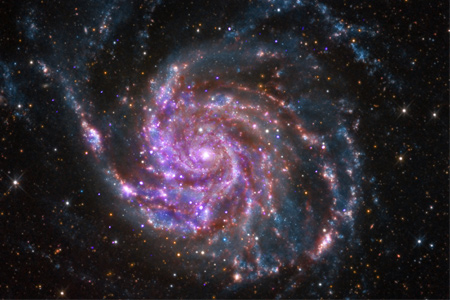Scientists Discover the Brightest Galaxy in The Universe
Scientists continue to make fascinating discoveries about the universe existing just beyond our blue skies. Most recently, NASA’s Wide-field Infrared Survey Explorer (WISE) has detected what scientists have determined to be the most luminous galaxy in the universe to date. The galaxy, named WISE J224607.57-052635.0, shines so brightly that the light it gives off is approximately equivalent to more than 300 trillion Suns. Yes, 300 TRILLION.
This newly discovered galaxy belongs to a new class of objects recently designated by NASA as Extremely Luminous Infrared Galaxies or ELIRGs. Astronomers and astrophysicists postulate that the reason this galaxy is super bright is because it’s undergoing a galactic “growth spurt” and that within this galaxy there is a supermassive black hole chowing down on the plentiful gases the galaxy is emitting.
By “feeding” the black hole with gases and matter, the disc that surrounds it begins to heat up to millions of degrees while simultaneously blasting out enormous quantities of energy including, visible, ultraviolet, and x-ray light. While visible light is blocked by the clouds of dust surrounding the black hole, the irradiated and super hot dust begins to emit high amounts of infrared light. This massive infrared signal is what led scientists using WISE to discover this extraordinarily bright galaxy.
It is very common for most galaxies to have enormous black holes at their core, but finding one so large, so far out into the cosmos is extraordinarily rare. This makes this galaxy very special.
It also makes this galaxy a bit of a time traveler. Scientists estimate that the light they see from this galaxy travelled 12.5 billion years to reach us. So what scientists are observing now is just a snapshot of a galaxy from very many years ago.
Scientists are now reporting a total of 20 new ELIRGs, like this luminous galaxy. Their discovery is the direct result of NASA using WISE to pick up and measure infrared light. This will undoubtedly make the ability to measure both visible and infrared light essential to further exploring the universe around us.











